Food for Thoughts: Artistic Practice, Radical Care
The pandemic has intensified inequality and insecurity, but also created a space to rethink our underlying structures. If others are seizing the moment, why can’t artists? Curator and artist Roselle Pineda on communities coming together and the liveable life.
When the World Health Organization declared COVID-19 a pandemic in March 2020, the world as we knew it stopped. Many nations went into lockdown and we were forced to confine ourselves to safe spaces. Even then we faced an uncertain future in which, if we survived, most of us would have to withstand a global economic crisis. It is as if the wind got up in the night and took our plans away, as the Chinese proverb goes, and we suddenly found ourselves in a strange moment and space of perennial waiting.
The precarity that the pandemic has hurled us into has forced us to experience two opposite extremes in time and space — that of standing still, as we become more and more confined to our own little spaces and pockets of time; and that of hypervelocity, as the number of infections and deaths, and the sheer amount of information we discover about the virus, changes at unprecedented speed. A very tangible panic has crept in as the foundation of the current world order, entrenched in accumulated capital, begins to crumble, falling to crush the most vulnerable and marginalised.
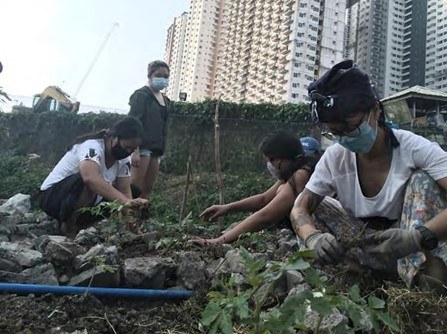
Indeed, the pandemic has intensified what Judith Butler in her book Notes Toward A Performative Theory of Assembly refers to as the ‘falling away’ of strongholds and support systems with/in our society. Now more than ever, we are confronted with news of people losing their jobs; with the disenfranchised being stripped of the choice to stay home because their lives depend on a daily wage; with the situation of immigrants, who make up a large percentage of frontline workers in the pandemic, facing an even more precarious situation with regard to their residency statuses; and with the actions of right wing and/or fascist regimes who weaponise the pandemic to suppress dissent and set up more authoritarian regimes. Truly, as the Argentine philosopher Miguel Benasayag has said, the pandemic has become a ‘tyrant’s dream’.
In my own country, Philippine President Rodrigo Duterte has been one of the most unsuccessful leaders in dealing with the pandemic. While he and his lackeys hold on to their seat of power through widespread militarism, his regime has failed to provide a comprehensive plan of action against the pandemic at the same time as it has lead the country into an even more dismal economic state, with COVID-related debt now in the trillions of PH pesos and counting. Worse, he organises his ‘combat CO- VID-19’ programmes under a quasi-martial law, crushing debate, dissent, and resistance against the regime. Not only are the Philippine National Police (PNP) and the Armed Forces of the Philippines (AFP) placed in charge of these civic health programmes, they are also implemented alongside Duterte’s counterinsurgency plans and policies. These are characterised by numerous instances of coercion and harassment, as well as by raids and killings of artists, activists, community workers, lawyers, researchers, and others deemed ‘dissenters’ or ‘communist terrorists’.
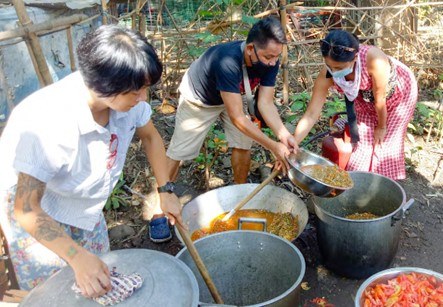
This worsening situation on the ground calls on us to resist, to gather, to assemble, and to protest against positions of precarity. But how do we protest when the world is at a standstill? Where do we find a space for progressive action when we are in the space in between? How do we gather and forge solidarity when maintaining distance is today’s form of solidarity? Perhaps the radical potential lies in recognising that while precarity is unevenly distributed, it is, unfortunately, still a universal condition. As such, our shared experiences of dispossession could be regarded as points of intersection and solidarity, not only within our local contexts and communities but also globally — a global unity of the dispossessed. The radical potential of the space in between lie in transforming this global unity of the dispossessed into a kind of radical care, realising what Butler describes as an interdependent form of cohabitation, where one form of life is not in a position of privilege over another and life is ‘livable’ for all, not just for the privileged few. The radical potential of our creative practice is perhaps to find, as Jacques Rancière puts it in his Dissensus, “new ways of making sense of the sensible [and] new configurations between the visible and the invisible [...] between the audible and the inaudible, new distributions of space and time – [and] new bodily capacities”. The use of art and performance to reimagine, reframe, reinvent, and find new ways of seeing and doing gives us a potent practice to make sense of our space in between.
The performative body has the polemical potential inherent in its materiality and the way it occupies, carves out and intervenes in spaces, struggling against various forms of invisibility and disenfranchisement to create what Hannah Arendt calls ‘spaces of appearances’. Indeed, while performance has been one of the art sectors most affected by the pandemic, it was also one of the first to respond to the ‘invisibility’ that the pandemic trapped us in by creating artistic productions in and during quarantine. Whether these responses came in the form of montages of ballerinas dancing from home, musicians giving lockdown concerts, or festivals and other performing companies shifting to virtual platforms, they were powerful demonstrations of artistic resilience and the right to present, perform and appear. They also sparked timely conversations on the precarious situation that the creative sectors faced even before the pandemic. These ‘performance practices from home’ were not only expressions of the artists’ untiring commitment to their craft; they also gave us, the audience, a glimpse of their domestic environments and ways of living. In these documentations of private space made present in the (virtual) public sphere, we have both borne witness to a beautiful archive and deluge of creativity of and from confined spaces, and seen how these confined spaces have taken their toll on performing artists and on all of us.
These conversations, which started quite intimately with artists documenting their lockdown lives, have also taken shape in various virtual gatherings that focus on the economy and ecology of artistic practices, and the power structures that support them. During the international symposium ‘Conversations on Curation and Performance in the Time of Halting and Transformation’, spearheaded by Performance Curators Initiatives (PCI) and held in October 2020, Canadian dance scholar, curator, and educator Dena Davida spoke of the numerous ongoing meetings happening in North America regarding the future of the performing arts field. Mostly attended by artists, presenters, venue directors, curators, scholars, and programmers, these meetings have discussed a range of concerns, from raising funds for the most badly affected workers and practitioners in the performing arts field, to the systemic inequality caused by the devaluation and mishandling of public funds and the practice of ‘gatekeeping’ in their distribution.
Another thread has been the radical transformation of dance and performing arts as a field of study, with dance programmes adapting to the challenges raised by recent social justice movements such as Black Lives Matter, as well as to the aesthetic shifts brought about by the pandemic. All of this debate is held with a view to emerging from the pandemic with a more caring and humane outlook, as well as proposals for restructuring current institutions and support systems in the performing arts.
The PCI 2020 Symposium’s recurring provocation to forge a ‘curatorship of care’ (founded on the Latin term curare from which the practice of curation evolved) invokes the inherent relationality of performance by extending the curatorial mandate of ‘care for materials’ towards ‘care for relationships’. Performance has always been a practice of relation, whether that’s relating to a perceived audience, to participants within the practice, or even to non-human elements such as space, site, atmosphere and sound. This practice of relation is a potent way to understand, navigate and imagine what a curatorship of care might be like, as well as to think about how this curatorship of care might be transformed into a model of radical care that can expand outside performance practice, forming what Judith Butler writes about as an ethical obligation to care for as well as be responsible for one another.
At FRESH STREET #4, keynote speaker and festival organiser Sepehr Sharifzadeh spoke of the open communication within his own neighbourhood in Tehran to illustrate a kind of model for this ethical obligation to care and be responsible for each other. Sharifzadeh described how neighbours would regularly check in on each other, on how they were doing, on what they needed, even before the pandemic. This practice of caring for thy neighbour has been a wides- pread phenomenon during the pandemic. We have seen expressions of camaraderie and support among neighbours, as well as collective action and organising in support of community needs. In the Philippines, for instance, the artist solidarity group SAKA or Sama-samang Artista para sa Kilusang Agraryo (‘ Artist Alliance for Genuine Land Reform and Rural Development’) has fo- cused on the tending of community gardens and community kitchens as a means of collective action against food insecurity in poor, communities that have been badly hit by the pandemic. The current phenomenon of community pantries in the Philippines, started by the artist Patricia Non as a small and simple pantry stocking basic goods such as rice, vegetables, fruits, alcohol, and face masks, along with a sign reading “Magbigay ayon sa kakayahan, kumuha ayon sa pangan- gailangan”, a rough Filipino translation of the famous quote, “From each according to his ability, to each according to his needs” popu- larised by Karl Marx, has spread like wildfire throughout the whole nation, growing from a single community pantry to about a hundred in the span of a week.
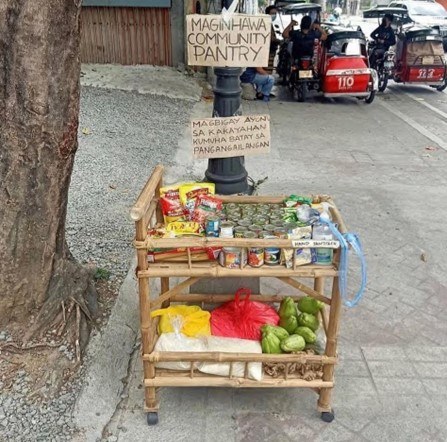
However, these community pantries quickly got on the radar of the fascist Duterte government, and within several days the initiators were ‘red-tagged’ (labelled as being left-leaning, subversive, communist, or terrorist) by the National Task Force to End Local Communist Armed Conflict, leading to the closure of several community pantries and the profiling and harassment of the people who started them. In this instance, we could infer that because the current systems in place are corrupt to the core, and indeed staunchly committed to maintaining our positions of precarity and dispossession, the practice of radical care also demands political action. Our ethical obligations towards one another also mean engaging in a struggle for collective rights that will minimise, if not dispel, conditions of precarity for all, whether it be economic, mental, emotional, environmental, or political. As such, radical care must go beyond small communities and beyond our neighbourhoods. As a pastor from Indiana,
Thomas Horrocks, quipped, “loving our neighbours means dismantling the systems that oppress them”.
This point was picked up at FRESH STREET by Chiara Gusmeroli, who underlined the need for an unwavering commitment to act, participate, speak out, negotiate, assemble, and claim the “right to appear”. “Coming together,” she says, is just the beginning; we must “keep together” and “work together” to continue to pressure the powers-that- be. It is our ethical obligation and collective responsibility to struggle in, with, and against precarity.
This call for collective responsibility and the forging of a collective voice is one that is now sounding throughout the world. In the ‘Globe Occupy: Remake the World/Re- make the Globe’ event held in Rome, Italy from 14-19 April 2021, over a year after the pandemic was declared, the collective voice of the Art, Entertainment, and Culture Wor- kers’ Network, was loud and clear:
Today we say: It’s enough! [...]This stratified and heterogeneous city assembly, today occupies a public space to strongly affirm the need to rethink a sector, which was in crisis well before the health emergency [...] This is the time to intertwine the struggles, to get out of invisibility, to speak out [...] We do not need to reopen the theaters and cultural spaces, if the conditions to do so, in safety for everyone, do not exist. The indiscriminate so called restart penalizes the most fragile experiences and fuels competition, aggravating an already collapsing system. Choosing between health and work is not a questionable option. We need to structurally rethink the conditions of our lives and our work, giving the possibility to all the subjectivities that exist in the city, to imagine models that are sustainable, based on collaborative bottom up practices, also replicable elsewhere. What we have been experiencing on our skin in recent months is only the inevitable collapse of a system that is unsustainable for all of us, which today concerns those who are more fragile and will soon end up desertifying the entire landscape. We claim the right to a continuous basic income, to a paid and permanent training, because time of research and study is work. [We] need new social rights and new protections, we need tools against discrimination and inequalities between subjects; a need [for] an access to art and culture for everyone is clearly emerging. We defend the informality of the spaces of artistic and cultural production currently excluded from the financing circuits, and we reiterate the need for a revision of the public financing criteria. From this public place, which lives of a strange combination between public and private, today we take word. Today we enter to go out and we invite you to do it with us, to build a collective discourse in which everyone can recognize themselves and immediately begin to imagine together new paradigms, new statutes, new social rights for precarious, autonomous, intermittent work. We invite single workers, artists, technicians, operators, companies, artistic and cultural institutions, theaters, festivals, research centers, formal and informal spaces to support our struggle.
Let us heed the call. The time is now.
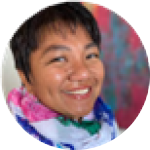
Roselle Pineda (The Philippines) is an educator, researcher, curator, dramaturge and cultural worker. She is the founder, artistic director and curator of the Aurora Artist Residency Program and Space (AARPS) and the Performance Curators Initiatives (PCI). She teaches at the Department of Arts Studies, University of the Philippines Diliman; and is currently taking her PhD in Creative Arts on practice-led creative research and community arts at the University of Wollongong, Australia.



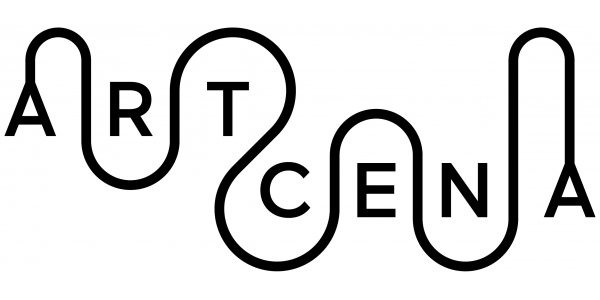

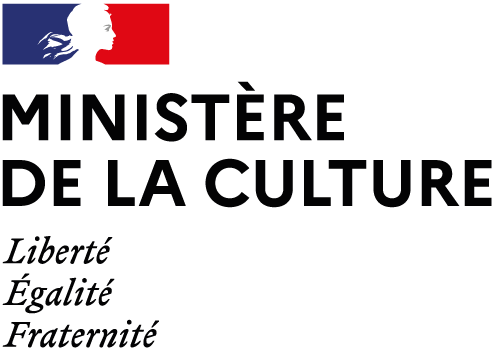
write us: infocircostrada@artcena.fr